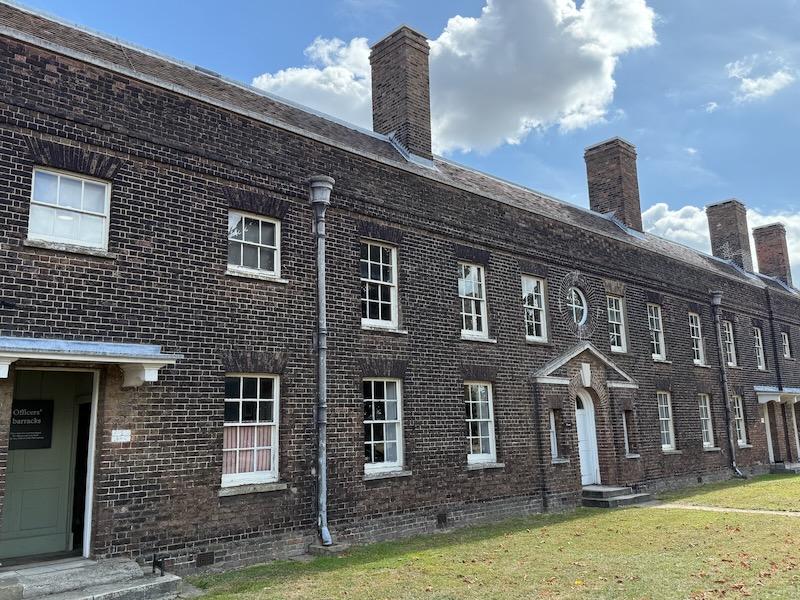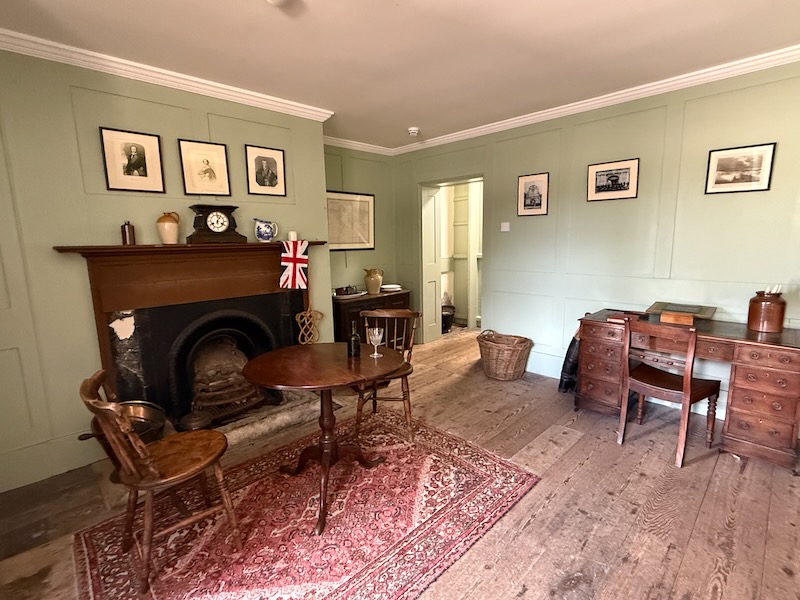Our Blog - August 2025 - England trip - Tilbury Fort
This was as far North as we traveled this year, just on the North side of the Thames River to Tilbury Fort. This is an artillery fort that was started as a small blockhouse constructed by King Henry VIII. It was reinforced during the 1588 Spanish Armada invasion scare and then it was enlarged again during 1670 into a star-shaped fort with angular bastions and water-filled moats.
In 1533, King Henry VIII severed his alliance with the Pope because the Pope wouldn't grant him an annulment from Catherine of Aragon. Catherine was the aunt of King Charles V (the Holy Roman Emperor) who took the annulment as a personal insult. France and the Holy Roman Empire formed an alliance against England in 1538 and a set of forts were built along the English coastline to provide a defensive line in case France decided to invade. Eventually the threat passed and things were quiet until 1588.
In the summer of 1588, there was a fresh threat of invasion by the Spanish Armada. An army was mobilized and emergency improvements to the fortifications at Tilbury were made. Queen Elizabeth I visited the fort in August 1588 and rode in procession to the nearby army camp, where she gave a speech to the assembled forces.
In the early 1600s, there was peace again until 1667, when the Dutch fleet attacked up the Thames River. We had visited Upnor Castle, on the Medway River, and learned about the Dutch attack in 1667. The Dutch fleet was deterred from going further upstream due to the fortifications at Tilbury and went up the Medway River instead. In fact, there were only 2 guns available at Tilbury at the time, but after the attack in the Medway River, an additional 80 guns were mounted here and across the River at another fort.
Soon after, a huge rework was done, turning the blockhouse fort into a 5-sided, star-shaped fort with 4 angular bastions, 2 moats, and 2 new gatehouses. This is one of the gatehouses (and the most impressive one), called the Water Gate. Built in 1682, it was the ceremonial entrance to the fort and the architecture on the outside was designed to impress anyone passing the fort on the River. You can see the carved displays of classical and 17th-century weapons on either side.
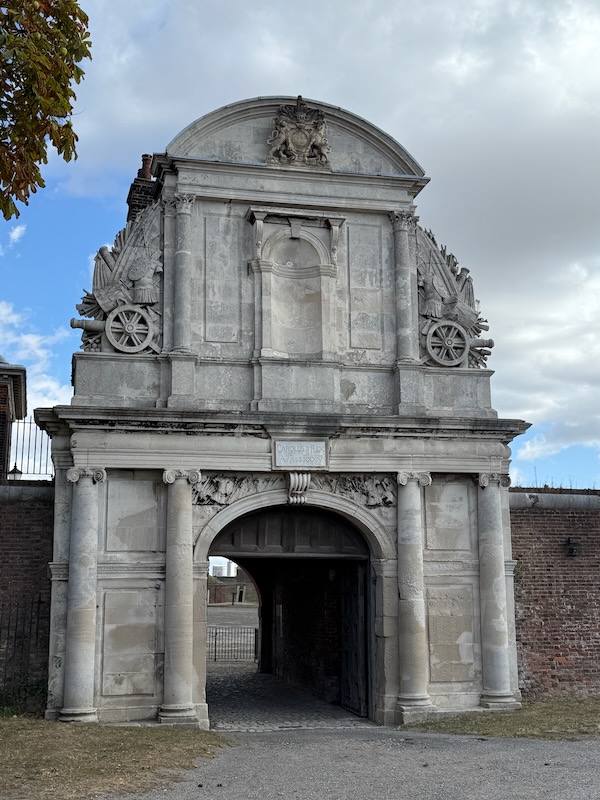
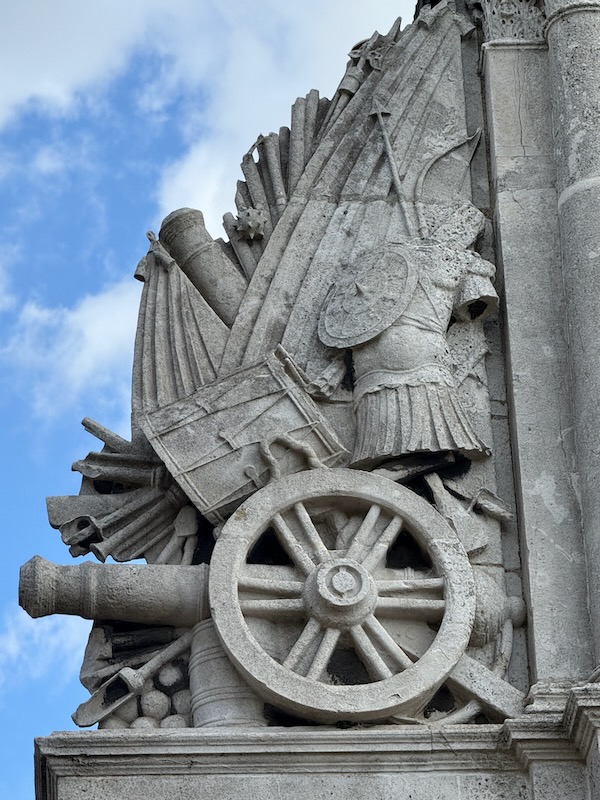
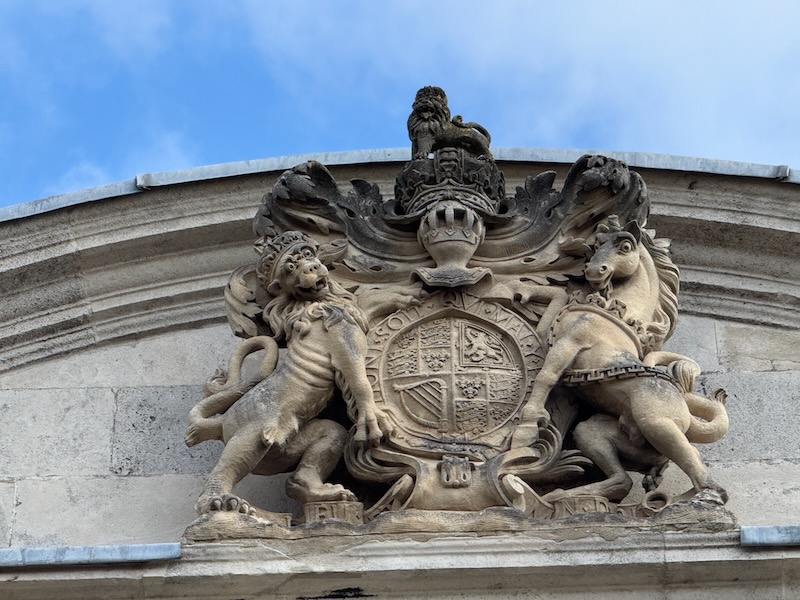
This is the parade ground, or the inner workings of the fort. On the far side, on the right are the Officers barracks (you'll see those later) and the left-side buildings (the shorter ones in the light) are gunpowder magazines. The foundations that you see in the foreground were the soldier's barracks, but were damaged during WWII and demolished. Then a closer view of the gunpowder magazines and the officers barracks (with the chimneys).
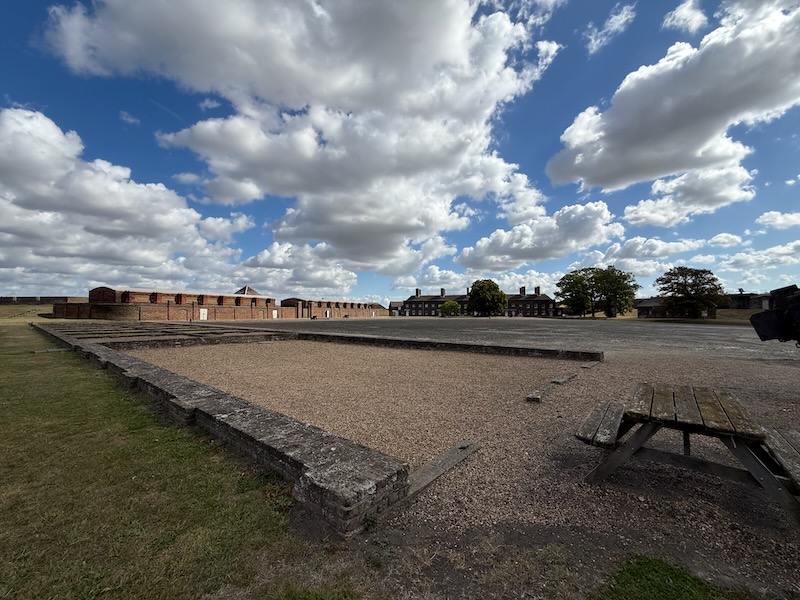
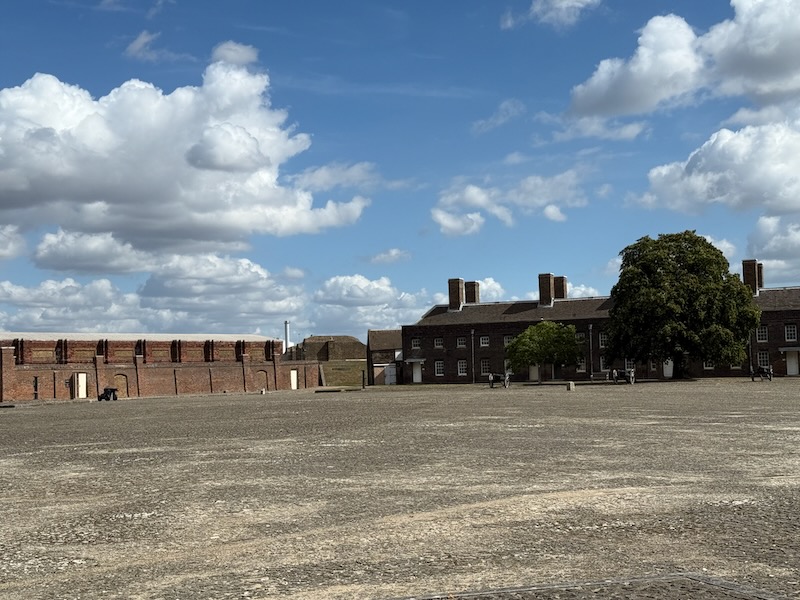
They had a set of guns on display there, none of them having information on them to tell me what they were (sorry). A few are in the parade ground but there are also the guns in their original placements along the front wall, overlooking the Thames River. The row on the river are quick-firing guns that date from 1902. They were first mounted on warships in the late 1880s to counter fast torpedo boats but then installed on coastal defenses. They could fire a 12-lb shell a max of 9,000 yards.
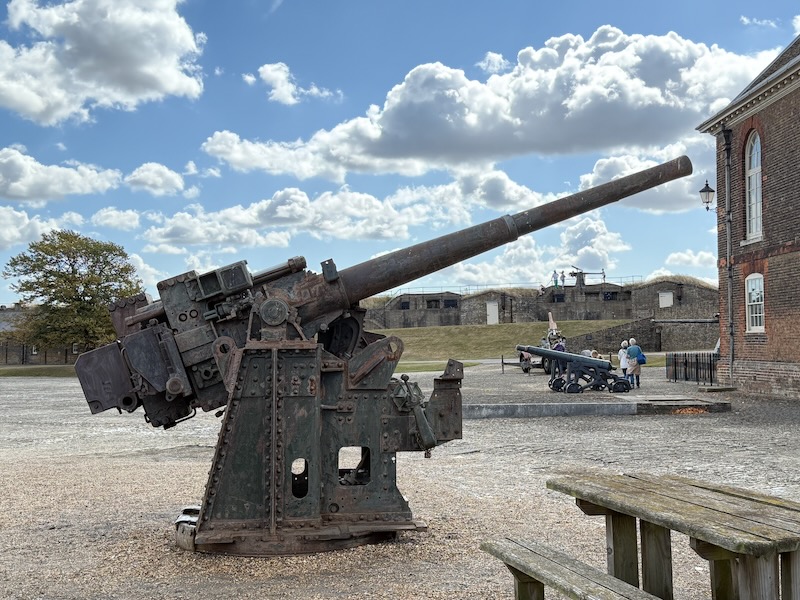
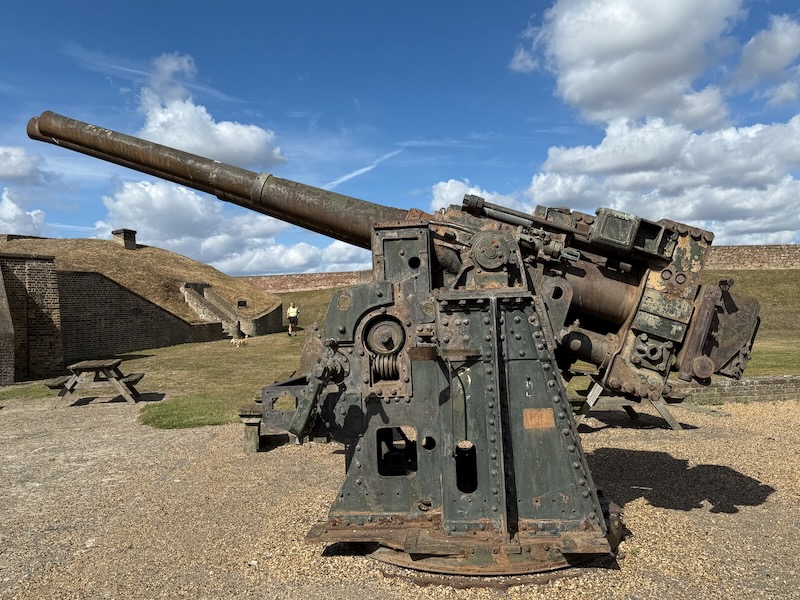
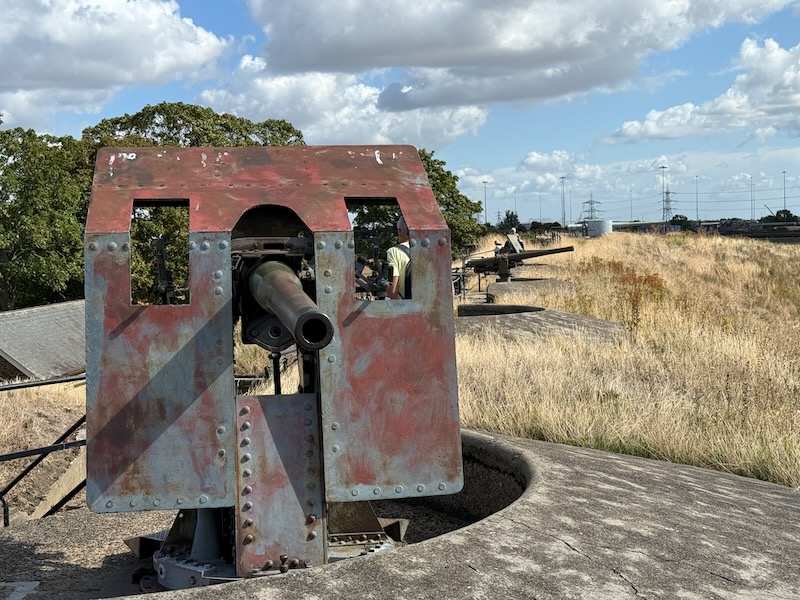
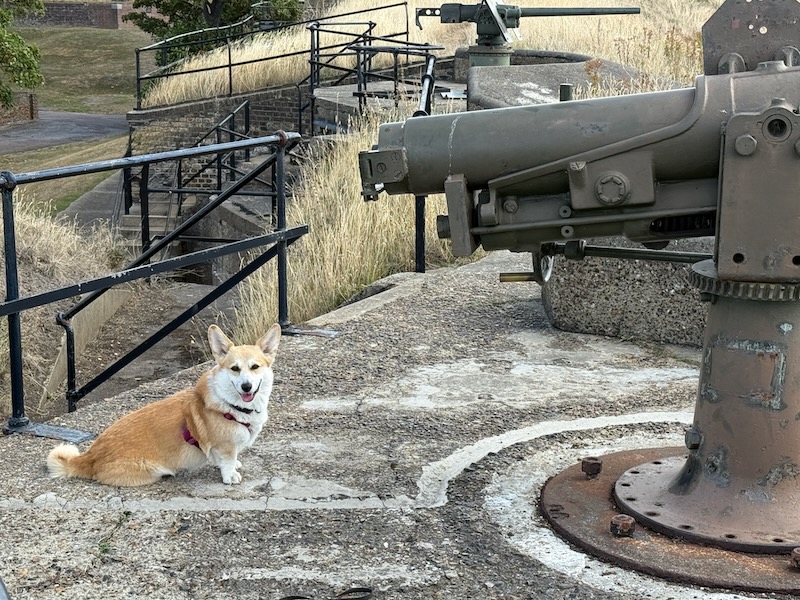
There are lots of these mounds, which are actually storage for gunpowder and/or shells for the guns.
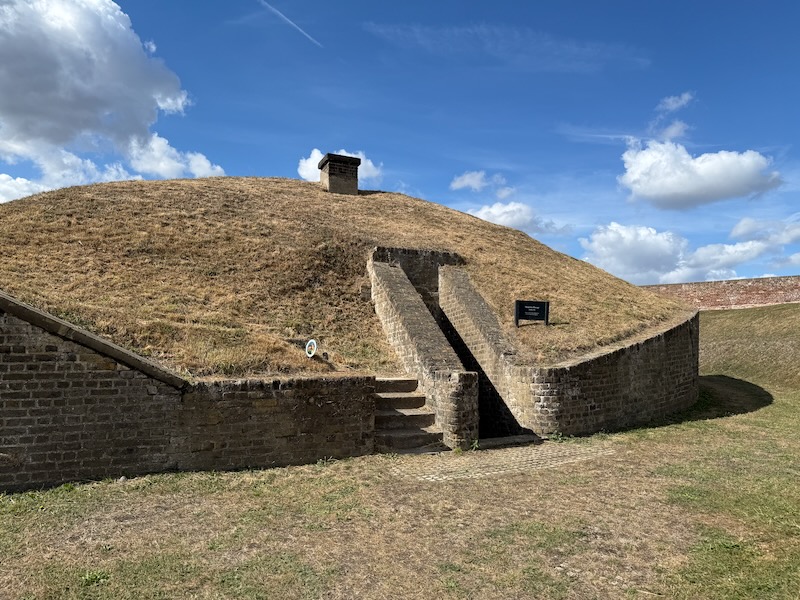
These are views on the non-Thames river side and the water there is the inner moat. There was another moat a bit further out. You can also see a bit of the crenellations on the closer wall and the point in the distance with the other wall, which would be part of the star-shaped bastion.
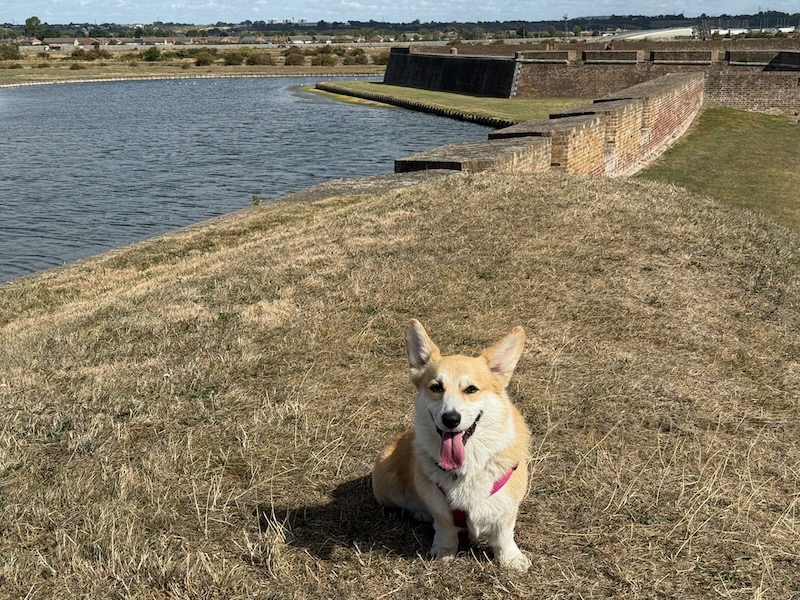
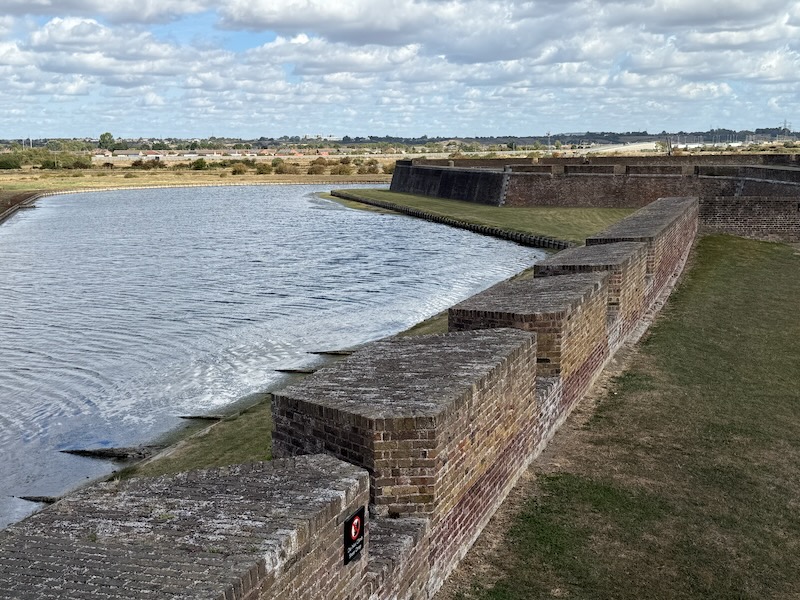
This one is a more recent gun, as you can tell, mounted in a concrete emplacement. To me, it looks a little like the top of a tank!
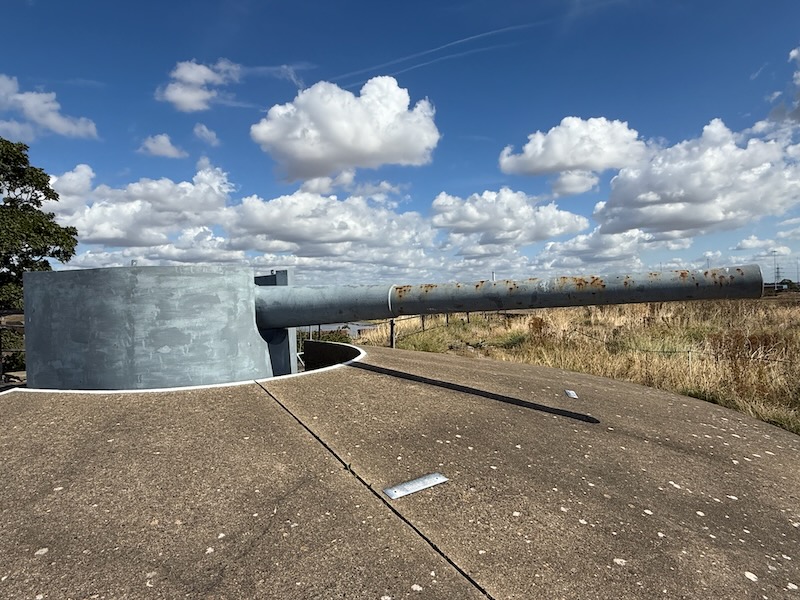
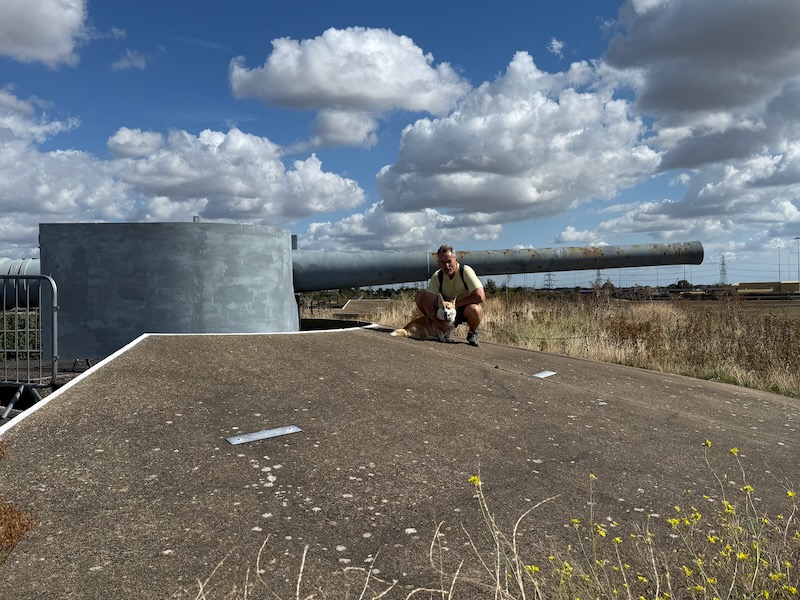
This was a bit interesting to me ... this is the room below the guns. The shells would have been stored on the other side and this contraption is a lift to take the shells from the storage here up to the level of the guns.
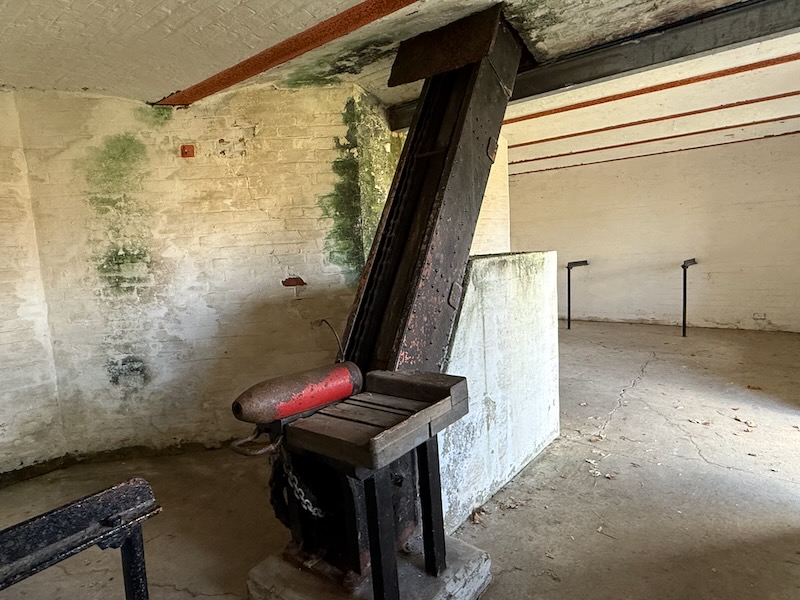
Here is an example of an older gun emplacement, from the 1870's, for a 9-inch rifled muzzle-loading gun. Each gun weighed 12 tons and had a range of only about 4.5 miles. The purpose of these guns was to destroy armored warships, like the French "Redoubtable". The Redoubtable was launched in 1876 and fitted with 13 large-calibre rifled guns, with an armored hull. The guns mounted here were designed to be able to penetrate the thick steel armor.
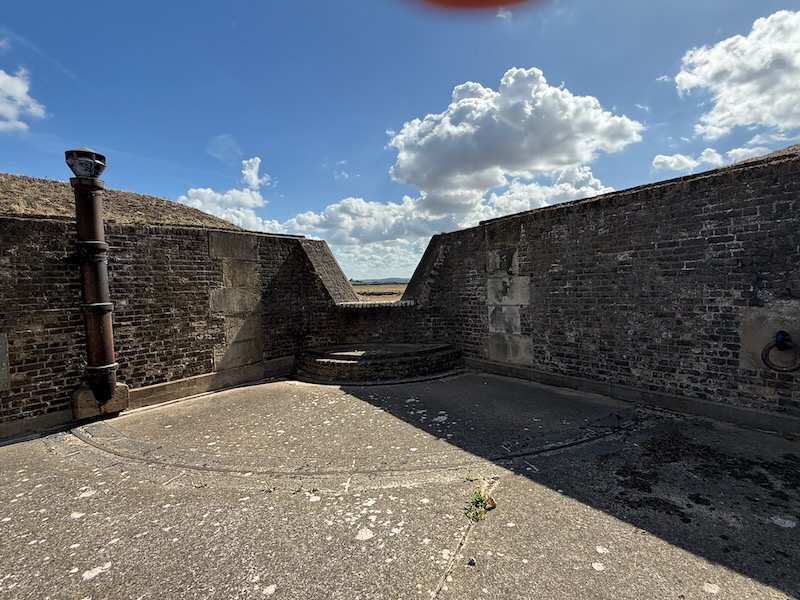
This big mound is similar to the one we saw earlier, but this one you could go into! This mound covers a large complex of rooms and tunnels, and is called a "magazine". It was built between 1868 and 1871 to store the ammunition close to the guns to streamline the supply during a battle, and they are well protected by thick walls, capped by concrete, and covered by a grassy mount. You can see the ventilation shaft coming out the top, to ensure that the interior stayed dry. The people entering these would have to change out of their uniform and boots into specialized clothes of finely-woven cloth with no pockets and slippers. This was to ensure no grit or sand came in, which could make sparks and detonate the gunpowder.
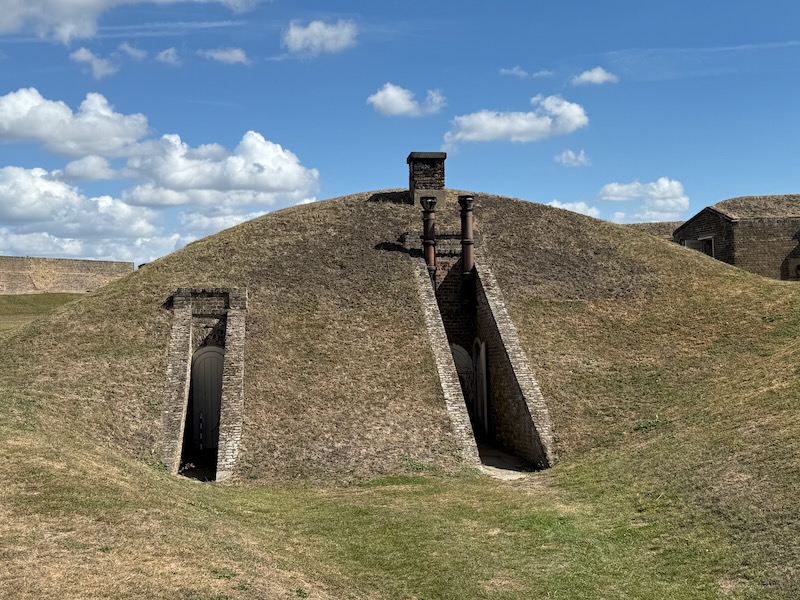
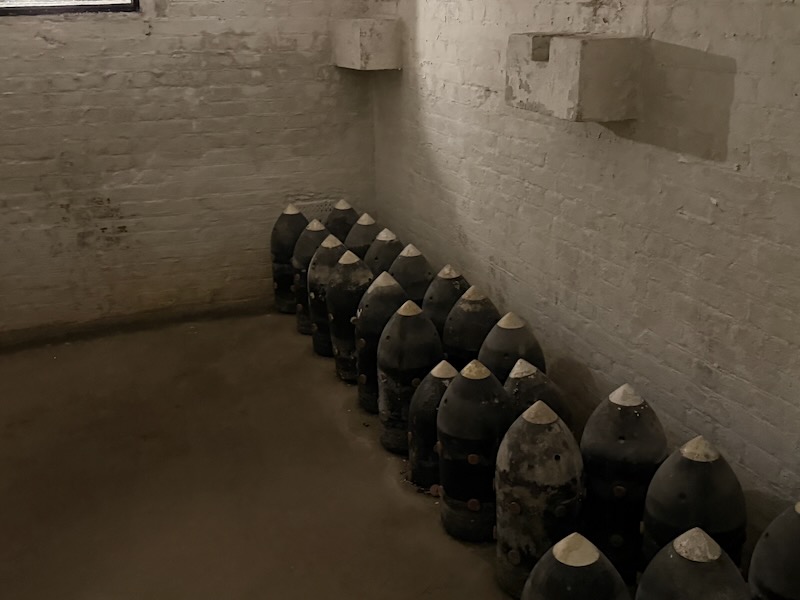
Back outside, here is the Officer's barracks, built in the late 18th century. Unlike the soldiers, who were packed 4-to-a-room, a junior officer had a 2-room suite while high ranking officers had 4-6 rooms. Interestingly enough, even this wasn't good enough and many of the officers chose to live across the river in the next town.
